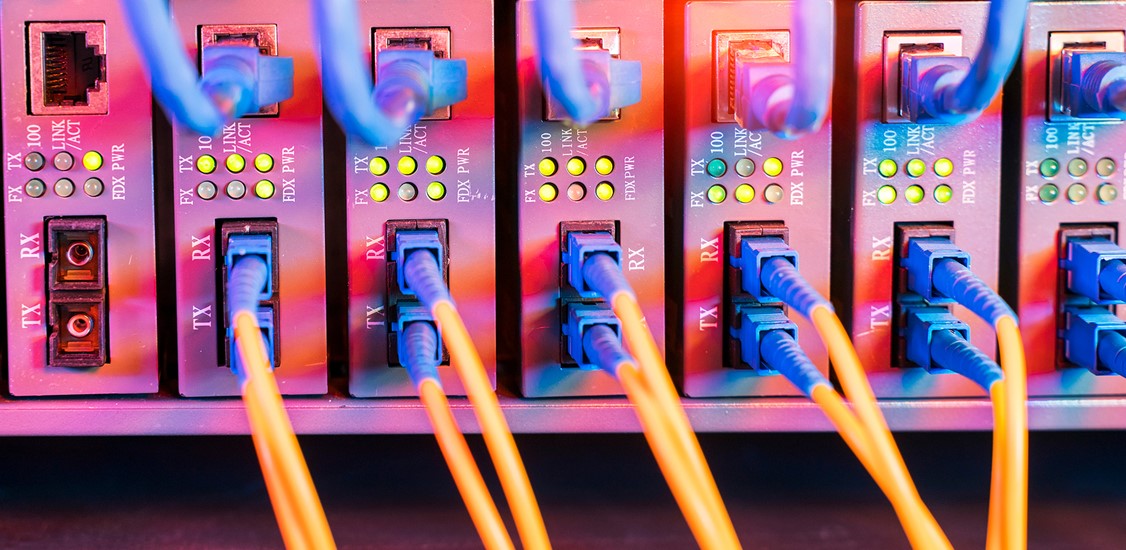Without equal access to the potential of fiber-fed internet, we risk creating another digital divide.
The digital divide is still here. And it won’t go away overnight. But it will be reduced incrementally over the next decade by enabling all homes and businesses with fiber-to-the-home (FTTH).
$65 billion in infrastructure spending is ready to dole out, and federal and state governments have their sights set on closing the digital divide. The goal is to bring high-speed internet to all Americans, particularly unserved areas without access or underserved communities with outdated technology unable to meet rising bandwidth demands. While this may not mean fiber-to-the-home (FTTH) for all U.S. citizens tomorrow, it should mean universal FTTH eventually if we want to keep the digital divide closed for good.
Universal FTTH is more than just fast internet speeds in every home: It brings new possibilities for the speed of business. With more people accessing those possibilities than ever before, we’ll see the creation of new applications and technologies that advance our capabilities and grow economies. It may take time, but as long as we all stay involved and understand the bigger implications of getting everyone connected with fiber, universal FTTH is inevitable.
What is FTTH? Understanding backbone, middle, and last mile
The internet backbone is like a highway system of fiber: Principal data routes connect regional networks to core routers, serving for the high-speed transmission of heavy data traffic or connecting lower-speed networks. The middle mile is another fiber connection linking to the internet backbone but not usually providing direct service to an end user. It may connect large user needs, like government, utilities, schools, and hospitals, but mostly, these middle-mile networks provide fiber to the node (FTTN) service that extends the speeds of the backbone fiber and brings them closer to the end user. “Last mile” service providers then connect to these shared nodes to deliver the final length of connectivity to the user’s home, often using copper connections—coaxial cables used for television or twisted-pair cables used by telephone companies.
To connect users to the internet, all service providers must connect to the backbone in some way: How they connect to this backbone will ultimately affect the end user's service. Copper connections have speed limits, meaning users with FTTN end up with slower connections. With fiber, on the other hand, we have yet to scratch the surface of its full capacity for speed directly to a home or business. As we do, companies will develop technology to utilize that full capacity. Those who have the speed and reliability of FTTH will benefit from these advances, while the “have-nots” will exist in a different world, unable to compete. Without equal access to the potential of fiber-fed internet, we end up creating another digital divide.
As demand continues to spread, so will FTTH
For some, FTTH is already available. While my mother may not have been as excited by its availability in her home this past summer, I was over the moon to try it. Even as the CEO of a fiber product provider, I had never experienced the speed of true FTTH. The instantaneous response was amazing! As more people start seeing the performance advantages and the possibility of these capabilities, companies will develop products and services that increasingly rise to meet them. As individuals and businesses start using these new tools to their advantage, demand will spread across the country for the same level of performance.
Of the 130 million homes in the U.S., 40 million have direct access to a fiber-fed network. Service providers will continue to offer FTTH, prioritizing areas with high demand where they see such deployment as a valuable investment. Government funding is becoming available to cover underserved and unserved areas, and analysts predict an additional 20 million homes will have FTTH access as a result. Through the end of the decade, private funding will be turning up 10 million homes a year. Investors will continue to drive fiber’s market share, and alternative technology holders, like cable TV providers, will continue the trend of strengthening their networks with more fiber to offer competitive quality and speed.
Universal FTTH won’t happen all at once, but it will happen
Adopting FTTH or extending hybrid-fiber coax (HFC) infrastructure isn’t a bad step in this process; it’s an incremental one. These connections may not offer the same limitless up and down speeds as a direct fiber connection. Still, they will help close the internet access gap where people have none or are stuck with outdated technology until universal FTTH is possible. Incremental steps allow for improvements now while providing the opportunity to bring fiber to the home later.
This incremental process may end up being more costly down the line in the bigger picture of network administration, but it’s less costly per year now, which makes it an easier transition. It’s like remodeling a house: Do you remodel as your budget allows, or spend as much as possible on everything all at once? The latter may be possible with a hefty bank account or a loan, but sometimes the better decision is to spend incrementally and stay within our means.
For those not covered by the initial FTTH rollout, the best action to take today is to pay attention to your state’s mapping and ensure it accurately represents your homes and communities. In November 2021, the FCC published its first draft of a National Broadband Map and is now open to challenges regarding its accuracy. This stage establishes the unserved and underserved areas that need government funding today and where to plan for better connections in the future. Of course, we still have to sift through 100s of 1000s of appeals and probably won’t get it perfect the first time, but it will paint as clear a picture of the good we can do as possible to trigger the shift from planning to taking action.
FTTH closes the digital divide and future-proofs it
Once everyone has access to the untapped potential of a direct fiber connection, we can close the digital divide and keep it closed, even as individuals and enterprises continue to find new ways to tap into it. The demand for faster and more reliable internet will only grow as technological advancements take hold in our economy. When it comes to benefiting from that growth, universal FTTH future-proofs our ability to provide everyone with an equal playing field.






















